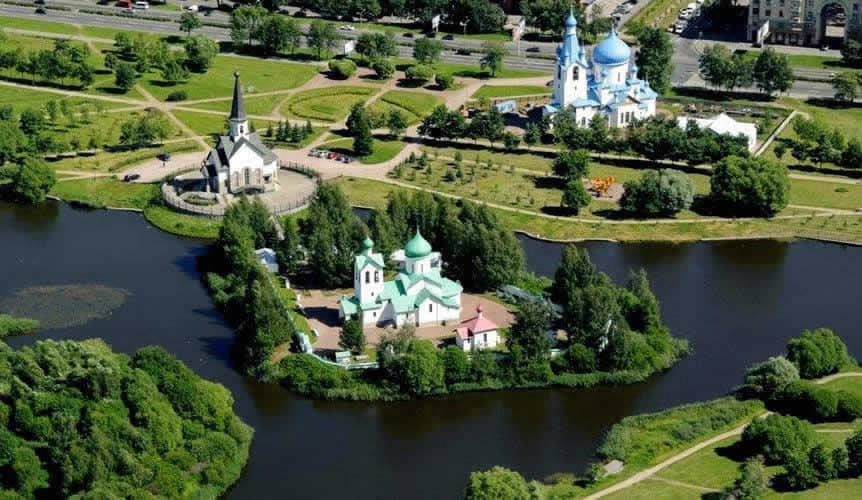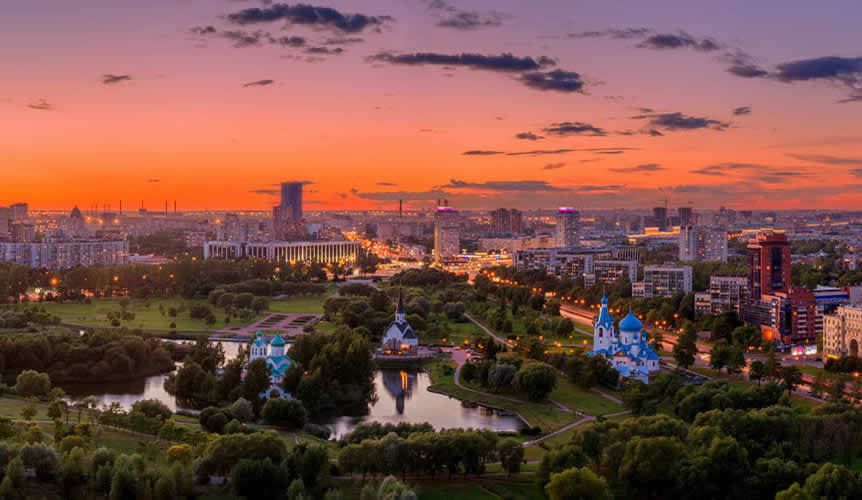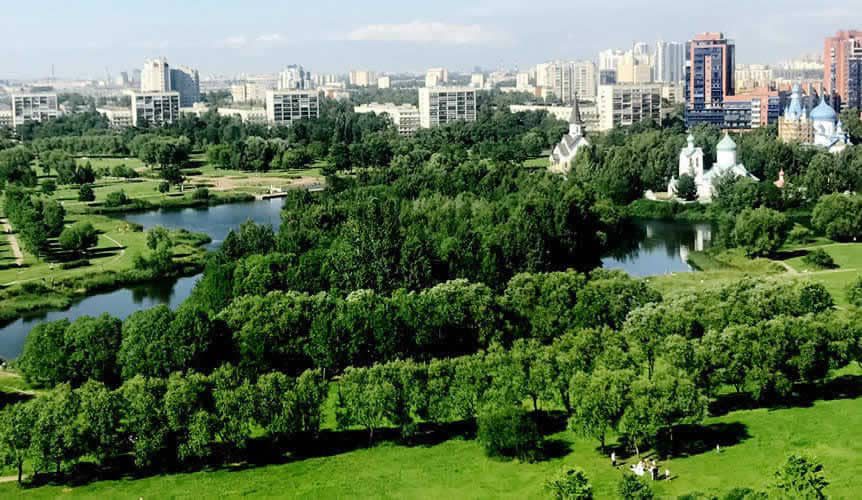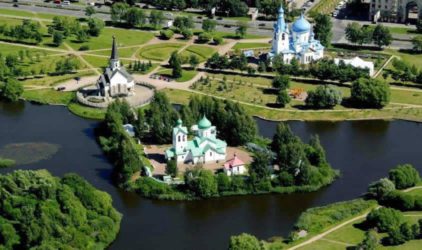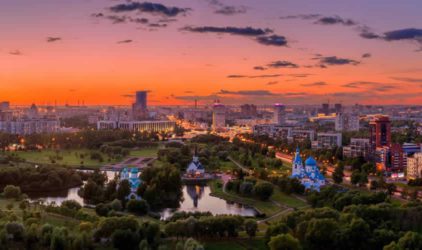Climate of Russia
The climate of the Russian Federation is formed under the influence of several determining factors. One of the most important is the huge size of the territory and the remoteness of many areas from the sea (most of the country territory is located more than 400 km away from the sea, and some areas – 2.400 km), which caused the predominance of the continental climate.
The total land fund of the Russian Federation is more than 1.7 million hectares, of which less than 20% have been developed, so we can call our country wild. Forest resources are 22% of the world’s forests and 1/4 of the world’s timber reserves.
The forests cover about 50% of the territory of Russia. Our country has several natural zones, which are arctic deserts, tundra, forest-tundra, taiga, mixed and deciduous forests, forest-steppe, steppe, semi-deserts and deserts. Within the arctic deserts zone there are Franz Josef Land, the Novosibirsk Islands, Wrangel Island, large parts of Novaya Zemlya and Severnaya Zemlya are located, as well as a number of the small Arctic islands. Arctic deserts are barren lands, bound by permafrost and covered with large glaciers.
Taiga is the most extensive natural zone of Russia it stretches from the western borders of Russia to the Pacific Ocean. Altogether more than 60% of Russia’s area is in the taiga. The length of the steppe from north to south in European Russia is about 200 km. A wide strip of steppe extends from southern Ukraine along the southern part of the East European Plain and north of Kazakhstan to the Altai Mountains. The zone of the forest-steppe is, as the name implies, a transitional zone between the forest zone and the steppe; Stretches almost an uninterrupted strip from the borders of Central Ukraine through the East European Plain, the south of the Urals and Western Siberia to the Altai. The average temperature of July to 21 ° C, January to -8 ° C in the European part and to -18 ° C in Western Siberia. The tundra zone covers about 10% of the territory of Russia and is located within the Arctic and subarctic climatic zones; Extends from the border with Finland in the west to the Bering Strait in the east.
The zone occupies a narrow coastal strip in the extreme north of the European part of Russia and reaches a maximum width of 500 km in Siberia. The zone of the forest-tundra stretches along a narrow strip (20-200 km) along the southern border of the tundra from the Kola Peninsula to Kolyma. It is located within the subarctic climatic zone. The semi desert and desert occupy a small part of the territory of Russia and are located within the Caspian lowland and the south-western part of the Altai Territory. The climate is dry, continental. The average temperature in January is -10 ° C, in July – up to 24 ° C. In summer, the temperature in the shade often reaches 40 ° C.
The southern taiga in the European part of Russia is replaced by mixed forests. The zone of mixed and deciduous forests has the form of a triangle, the base lying on the western borders of the country, the summit of which rests on the Ural Mountains. The climate is moderately continental, rather humid; Long, warm summers, long, moderately cold winters (in the European part of the zone); The average July temperature is + 16 … 21 ° C, January is -6 …- 14 ° C in the European part and up to -28 ° C in the Far East.
Nature of Russia
Russia is a huge country, with a rich animal world, while many fauna representatives live in certain climatic zones. Russia is the habitat for the bulk of land animals from more than 1.500 vertebrates, over 700 species of birds, about three hundred species of mammals.
Also there are more than 85 species of reptiles, 350 freshwater fish, the number of species of marine fish exceeds 1.500, and amphibians 350. The presence of animals in a particular territory directly depends on the landscape and climatic properties of this zone. The fauna of the Arctic zone of Russia is simply unique, it is inhabited by a huge number of living organisms. Perhaps the main animal in the life of the peoples of the North is a deer, it supplies them with meat, milk, skin, and clothes.
The most numerous population of these domesticated northern animals lives in the Yamalo-Nenets Autonomous District. The main symbol of the Arctic is the polar bear, although the northern coast is inhabited by other marine mammals, for example, the sea hare, walrus and seals listed in the Red Book, whales, beluga, narwhal, cod, herring, salmon and more than 430 species of fish fauna are floating in its waters. Also in the Arctic region, live foxes, ermines, wolverines, Arctic foxes, rabbits, lemmings, hamsters and other rodents. Animals of the subarctic pole are inhabitants of the tundra and tundra forests, comfortable feeling themselves in conditions of long low temperatures and excessive humidity.
Due to the reduced salinity of water and its saturation with oxygen, plankton and other diverse marine fauna develop abundantly. The largest marine mammals in the world live here – walruses and seals, whales and polar bears. In the tundra, the species diversity of the animal kingdom is much richer than in the Arctic. A significant part of the animals living here has a light color and thick fur, which allows to survive in local conditions.
Also in the summer period, reindeer are inhabited in large quantities. The temperate zone occupies the main part of Russia and is characterized by a complex climate with a lot of precipitation and strong gusts of wind, but in spite of this, the animal world is extremely rich and diverse here. In the green forests there is a large number of different herbivores and birds, with a predominance of carnivorous and insectivorous, many predators, among which the wolf is especially common.
The environment is favorable for lynx, hyena, cheetah, tiger, jackal, arachnids and invertebrates. Most often in the forest zone you can meet elk, which can easily wander into the residential part. Also, the temperate zone is inhabited by squirrels, hares, wood grouses, wild boar and roe deer. You can meet a brown bear, mink or forest marten. For such rodents as squirrels, here is just paradise, because the forests of the temperate zone are rich in nuts, seeds of lime, conifers and maple, acorns, which are also a favorite food of wild boars, bears and other animals and birds.
The subtropics are favorable conditions of the Black Sea coast for the existence of living organisms, but in general it can be said about the mixture of species of the animal world of the tropical and temperate zones. In the mountains of the Greater Caucasus and on the Black Sea coast, the fauna is particularly rich and diverse. Fur grouses, chipmunks, sable and wolverine, marten and squirrel, spotted deer are widely represented in the Far East. Legendary in the world of local predators are the leopard, Siberian tiger and bear.
Subtropical zone is rich in wild hoofed animals – wild boars, roe deer, wild reindeer, saiga antelope and elk. This attracts hunters for fur animals like squirrels, mink, muskrats, foxes and polar fox. To date, the fauna of Russia under the influence of man has changed greatly, and therefore the authorities take various protective measures to preserve it. Some animals have almost completely disappeared, the number of some sharply decreases and is protected by law.
Summing up we want to admit that Russia has a huge sized territory and that is why it has many different climate zones, which are arctic deserts, tundra, forest-tundra, taiga, mixed and deciduous forests, forest-steppe, steppe, semi-deserts and deserts. Russia has also a rich fauna, it is the habitat for the bulk of land animals from more than 1.500 vertebrates, over 700 species of birds, about three hundred species of mammals. It is obvious that every man in the world has to visit Russia and see everything with his own eyes.
10 cose da sapere sulla Federazione Russia
1. La Russia è il più grande paese del mondo – occupa ben 17 125 187 km2. La superficie della Federazione Russa equivale all’incirca a quella del pianeta Plutone.
2. Più di un terzo del territorio russo è situato oltre il Circolo polare artico. La popolazione della Russia ammonta a 146 310 418 persone. È uno stato multietnico con maggioranza russa (80%). Il secondo gruppo etnico più numeroso sono i tartari, seguito dagli ucraini.
4. I monti Urali, che dividono la parte europea dalla parte asiatica della Russia, sono i più antichi del mondo.
5. La densità media della popolazione è di 8,4 persone per km2, ma nella Russia europea il valore raggiunge 27 persone per km2. Confrontatelo con 193 persone/km2 dell’Italia.
6. In tutto il territorio della Russia la lingua statale è il russo, ma in 24 delle 85 regioni (soggetti della Federazione) lo status della lingua statale è riconosciuto anche alle lingue locali.
7. La Russia confina con 16 paesi. In terra confina con Norvegia, Finlandia, Estonia, Lettonia, Lituania, Polonia, Bielorussia, Ucraina, Georgia, Azerbaigian Kazakistan, Cina, Mongolia e Corea del Nord, in mare con Stati Uniti e Giappone.
8. La distanza tra Russia e USA è di soli 4 km: è la distanza che separa le due isole Diomede, situate nello stretto di Bering tra la penisola di Chukotka e l’Alaska, di cui una appartiene alla Russia e l’altra all’America.
9. Il territorio della Russia attraversa 11 fusi orari: quando a Mosca sono le 15:00, a Petropavlovsk-Kamchatsky, nell’Estremo Oriente, è mezzanotte.
10. Tre quarti della popolazione russa vivono in città. Le 5 città più grandi del paese sono Mosca (12,2 milioni di abitanti), San Pietroburgo (5,2 milioni), Novosibirsk, in Siberia Occidentale (2,8 milioni), Ekaterinburg, negli Urali (1,5 milioni) e Nizhny Novogorod, nel corso medio del Volga (1,3 milioni).

